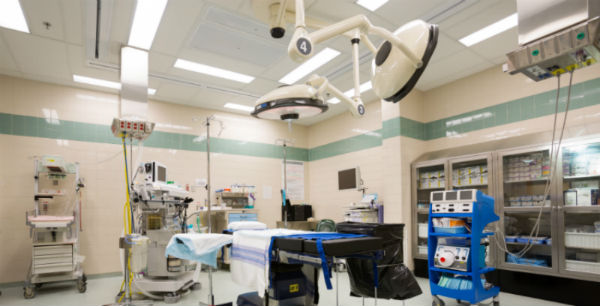The Health Technical Memorandum (HTM) 03 01 sets out a range of requirements for managers of healthcare buildings.
Who is it aimed at?
The Health Technical Memoranda apply to new installations and major refurbishments of existing installations.
The HTM guidance is provided by the Estates and Facilities Division of the Department for Health. It applies to ‘all types of healthcare premises’. It is aimed at healthcare management, estates managers and operations managers in all types of healthcare premises.
What is it about?
The recommendations are that all ventilation plant should meet a minimum requirement in terms of the control of Legionella and safe access for inspection and maintenance and to ensure that the system remains fit for its original purpose.
There are ventilation systems in many healthcare premises and all ventilation plant should be inspected annually.
More specialised ventilation is used in areas such as operating departments, critical care areas and isolation facilities, neonatal units as well as some types of laboratories, sterile facilities and some scanning / imaging environments. The performance of all ‘critical ventilation systems’ (such as those servicing operating suites) should be verified annually. There is an established link between surgical site infection and theatre air quality.
What legislation applies?
Ventilation systems are in some places used to dilute or contain harmful substances. The failure of such systems therefore could expose people to major risks and so in these cases there are statutory requirements. The Health and Safety at Work Act requires that where the ventilation system is in place to control recognized hazards then these are effectively maintained. Control of an operating theatre to prevent infection is an example.
Similarly, there is The Control of Substances Hazardous to Health (COSHH) Regulations 2002. If the ventilation system is in place to control such substances then it needs to stay in working order.
The fire regulations require that, if ventilation ductwork penetrates the fabric of a building, it should be designed and installed so as to contain the spread of fire.
Frequency of inspection varies by purpose
All ventilation systems should be subject to, at least, a simple visual inspection annually.
Ventilation systems serving ‘critical care areas’ should be inspected quarterly and their performance measured and verified annually. The quarterly inspection can be a simple visual check but the annual verification will be more detailed and include measurement of the system’s actual performance.
Responsibilities of managers
- Once installed, make sure that systems remain capable of delivering their initial intended function and to the intended standard.
- All ventilation systems should be visually inspected annually.
- Critical ventilation systems should be inspected quarterly and verified at least annually.
- Those who inspect, verify, or maintain ventilation equipment need to demonstrate that they are competent to do so.
- Verification and inspection should be undertaken by Competent Persons (Ventilation).
- The Competent Person (Ventilation) (CP(V)) is a person designated by Management to carry out maintence validation and periodic testing of ventilation systems.
- Keep records of commissioning information, operational management routine, monitoring and maintenance for at least 5 years. The Health and Safety Executive and other interested bodies have a statutory right to inspect them at any time.
- Ensure clear lines of managerial responsibility around operation and maintenance of the systems. The process for managing this should be periodically reviewed.
- The guidelines recommend specific roles for a ‘Designated person’ internally, an Authorising Engineer (Ventilation) (AE(V)), an Authorised Person (Ventilation) (AP(V)) and a Competent Person (Ventilation (CP(V)). Because of the role of ventilation in healthcare environments, the Infection Control Officer will also be involved.
- If the original purpose is unknown or no longer applies, then the Health Technical Memorandum gives design parameters for new installations.
Specifics of the issues to be checked
- Differential air pressure regimes; rooms should be pressurised so that air moves from clean to dirty areas.
- Room air change rates
- Noise level measurements
- Room fabric inspection
- Inspection of fire dampers
- Prevention of unauthorized access to the AHU (Air Handling Unit).
- Safe and permanent access for those who need it – particularly to those parts that require regular service (batteries for example).
- Adequate drainage (a variety of specific requirements are outlined).
- Compliance with Firecode.
- Prevention of the growth of microorganisms.
- Intake and discharge points separated and located away from vehicle fumes to ensure air quality is not adversely affected. There are specific requirements for the prevention of corrosion, infestation by vermin and leaf intake.
- There are specific requirements for fan-drives and their control systems, heater batteries, cooling coils, humidifiers and filtration and pressure stabilisers.
- All supply and extract ventilation systems should be clearly labelled. The label should identify both the AHU and the area that it serves.
Incidentally, some things that are external to the ventilation system need to be checked also; notably the integrity of the building fabric in the room.









